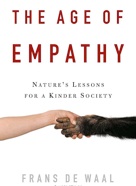2.7 then and now


we are still like that
So many of the ideas about what we might have been like then, way back a million or more years ago are indeed based on how we are like now; as long as we do not find ourselves in a culture that promotes aggression.
What I like to take into account in imagining our past is how we differ from other mammals, including our nearest relatives, genetically speaking, the chimpanzees.

People will often refer to war as proof that we are fundamentally aggressive. However, those who are actually on the ground are not the same people who make the decisions about war. Warfare is a political act, not a social one; and politics is learned, not inherited. Frans de Waal offers a nice observation:
“It is a curious fact that the majority of soldiers, although well armed, never kill. During World War II, only one out of every five U.S. soldiers actually fired at the enemy. The other four were plenty courageous, braving grave danger, landing on the beaches, rescuing comrades under fire, fetching ammunition for others, and so on, yet they failed to fire their weapons. One officer reported that “squad leaders and platoon sergeants had to move up and down the firing line kicking men to get them to fire. We felt like we were doing good to get two or three men out a squad to fire.” Similarly, it has been calculated that during the Vietnam War, U.S. soldiers fired more than fifty thousand bullets for every enemy soldier killed. Most bullets must have been fired into the air.”
De Waal F. (2009) The Age of Empathy;
Nature’s Lessons for a Kinder Society.
McLelland and Stewart, Ont. Canada
